
HSEM Reorganization
HSEM recently completed a structural reorganization. “We have made some significant organizational changes to better serve our constituents,” said Director Jennifer Harper. “These changes really focus on streamlining how HSEM can assist communities with prevention, preparation, mitigation, response and recovery from all hazards in the most fluid way.”
Mitigation and Recovery
Formerly the Planning Section, Mitigation and Recovery is divided into three sections, with each section focusing on a singular disaster recovery area: COVID-19, current disasters, and legacy disasters. Mitigation and Recovery is led by Section Chief Vanesa Urango. To contact Mitigation and Recovery email NHPA@dos.nh.gov for recovery programs and nh.hm@dos.nh.gov for mitigation programs.
Preparedness and Response
Formerly the Operations Section, Preparedness and Response is led by Section Chief Robert Christensen. Preparedness and Response is responsible for plan development and maintenance, along with training and exercises. In addition, the section is responsible for managing NH Alerts and all weather alerting. Questions for Preparedness and Response can be sent to nheoc@dos.nh.gov.
Community and School Readiness
Community and School Readiness is a new section consisting of the Community Outreach Office and the School Readiness Program, led by Section Chief Fallon Reed. This section is responsible for the School Readiness Program, in addition to Community Outreach, individual preparedness and public information. For questions about the School Readiness Program, please contact schoolreadiness@dos.nh.gov. For questions about community outreach or public information, please contact hsempio@dos.nh.gov.
Community Liaisons and Radiological Preparedness
Formerly the Field Services Section, the Community Liaisons and Radiological Preparedness Section is led by Section Chief David Vaillancourt. The staff members of this section are the liaisons for New Hampshire communities for all HSEM offerings; in addition, they are responsible for the Radiological Emergency Preparedness Program for the Emergency Planning Zone communities around Seabrook Station Nuclear Power Plant. For community questions, please contact nhhsemfieldservices@dos.nh.gov. For questions about radiological preparedness or the Seabrook Station EPZ, please contact rep@dos.nh.gov.
During any activation of the State Emergency Operations Center (EOC), HSEM staffing positions will continue to follow the National Incident Management System structure and revert to traditional EOC roles: Operations, Planning, Logistics, and Public Information. The HSEM 24-hour Duty Officer program remains the same. We are here to help, 24 hours a day, 7 days a week: 603-271-2231.
Governor’s School Safety Preparedness Task Force
The School Safety Preparedness Task Force was established by Governor Christopher T. Sununu in March of 2018. The Task Force was composed of 16 members who represented stakeholders at the state and local level. The Task Force presented 59 recommendations organized into seven topic areas that were most critical to the safety and security of New Hampshire’s schools while promoting the schools’ primary education mission. The seven topics areas are: legislation, mental health, planning, training, exercises, communications, and facilities.
Since the creation of the Task Force, the working groups have held multiple meetings, with the most recent taking place in May of 2022. Prior to this meeting, NH Homeland Security and Emergency Management hired Katherine Partington as the full-time School Task Force Coordinator. Having a full-time School Task Force Coordinator is essential to oversee the progression of the recommendations established by the Task Force, to monitor and track legislation related to school safety, and to conduct research of safety and preparedness measures as they pertain to schools.
Currently, the working groups are evaluating 10 new initiatives with the intention of them becoming recommendations and has identified the leads for each of them. The initial planning meetings and new working groups are in the process of being established.
The NH School Safety Resource Center, a central repository for all of the resources available to New Hampshire schools, was created due to recommendation 49 and announced in 2019. Information on the site includes resources for mental health, planning, training and exercises, communications, facility upgrades, and additional links to other agencies. There was an average of 5,400 reads per month in the last 12 months. Subscribe for updates at: schoolsafetyresources.nh.gov.
Abbot-Downing School Evacuation Exercise
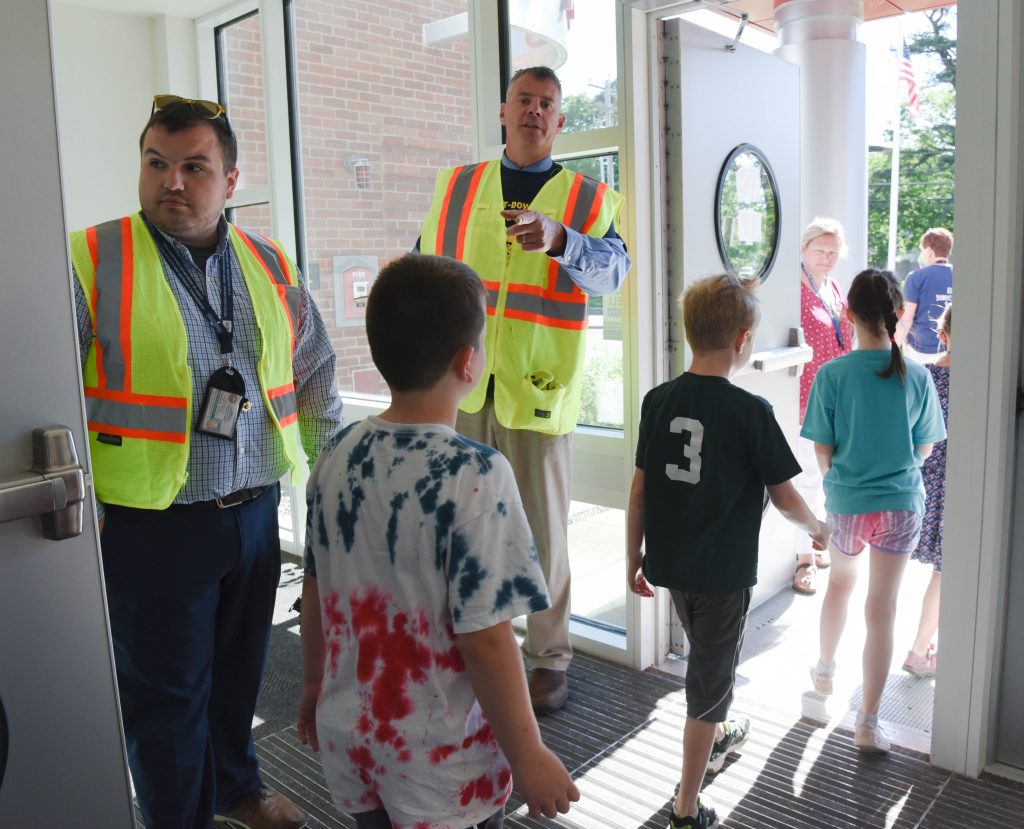


On Tuesday, June 14, HSEM School Readiness Program and Community Outreach staff members joined the students and staff of Abbot-Downing School in Concord and Concord Police and Fire Departments for an all-school evacuation exercise. A year in the making, the exercise involved moving the entire school to an off-site location in a drill scenario. The students and staff members moved quickly and efficiently to the off-site location for a rendezvous and accounting, followed by a return trip to the school. The successful exercise will assist with identifying any gaps or weaknesses in the school’s current plans to better inform future exercises or evacuations if needed. To learn more about the NH School Readiness Program, go to https://schoolsafetyresources.nh.gov/ or contact schoolreadiness@dos.nh.gov.
Lebanon School District Table Top Exercise (TTX)

On Thursday, April 7, members of the HSEM School Readiness Program held a tabletop exercise (TTX) with the Lebanon School District to test response plans for the SAU.
The tabletop featured the scenario of a HazMat incident occurring within the district.
The object of the tabletop was to facilitate discussion for the district and emergency responders regarding current emergency plans and communications options to highlight best practices and potential gaps in those plans. SAU 88 Superintendent, office staff, and representatives from each of the district’s schools, along with Lebanon Fire and Police, joined in the conversation. The district will now look to evaluate and improve upon their current emergency plans.
To learn more about the NH School Readiness Program, go to https://schoolsafetyresources.nh.gov/ or contact schoolreadiness@dos.nh.gov.
NH Houses of Worship Safety Programs
HSEM’s T&E program has several products available to New Hampshire’s faith communities, including three-hour emergency preparedness seminars, hate crimes workshops, tabletop exercises (TTX), and online two-hour topical presentations. Central to discussions are a focus on all-hazards preparedness and response, with priority intent to connect faith communities with their local first responders for further planning, conversation and exercises.
Since July 2021, we have slowly been able to return to in-person presentations. HSEM provided online HOW seminars on March 22 and 29, 2022, with topics including cyber security/safe social media use, active threat response, and first aid and medical response/AEDs.
Our three-hour emergency preparedness seminar agenda includes the “whole community” approach to emergency preparedness with emphasis on linking faith communities with their local first responders, schools, etc.; developing an emergency operations plan (EOP); and active threat response training using the Civilian Response to Active Shooter Events (CRASE) curriculum. These seminars were successfully delivered on October 30, 2021, at Bethany Church in Greenland; on November 20, 2021, at Hope Fellowship Church in Jaffrey; on February 13, 2022, at the Jewish Federation in Bedford, New Hampshire; and on May 4, 2022, at the Wellspring Worship Center in West Lebanon.

In addition, on June 22 HSEM hosted the day-long class Mobilizing Faith Based Community Organizations in Preparing for Disasters in Concord. In a time of emergency, faith-based organizations would serve as integral partners by providing facilities and volunteer resources for municipalities. The central lessons from the class are that plans and connections made in advance of an emergency are the best practice in order for faith-based community organizations to be the most helpful and protected in times of crisis. Discussion focused on how to best enable that process and lessons learned from past experiences nationwide.
The HSEM Training and Exercise program intends to facilitate two tabletop exercises involving house of worship in the next several months.
As the nation continues to confront violence both online and in person within its houses of worship, emergency management agencies and first responders must take already stressed resources and work to assist in saving lives. HSEM is on the forefront of this, working alongside New Hampshire’s outstanding safety system including local emergency management directors, state and local dispatch, fire, EMS and law enforcement. The connections made through the Houses of Worship program have and will continue to be encouraging and meaningful.
For more information and resources for New Hampshire Houses of Worship, please visit: https://prd.blogs.nh.gov/dos/hsem/?page_id=5994. Additional questions can be directed to Robert Christensen (Robert.A.Christensen@dos.nh.gov) or Steven Cooper (Steven.M.Cooper@dos.nh.gov) or through the HSEM main phone number at 603-271-2231.
Seabrook Station Graded Exercise
On April 6, 2022, more than 500 federal, state and local partners joined HSEM to execute the Seabrook Station Graded Exercise. Participants included DPHS staff, personnel from the 17 NH Emergency Planning Zone (EPZ) communities and the three host communities, and staff from multiple state agencies, making for one of the largest REP exercises in the U.S. The exercise culminated more than 6 months of planning done by the Radiological Emergency Preparedness Program. FEMA evaluated player actions against current response plans and capabilities for a nuclear power plant-related incident and to comply with the evaluation criteria set forth under the U.S. Nuclear Regulatory Commission’s guidelines. FEMA’s After Action Report (AAR) revealed that the participants of this exercise successfully demonstrated all of the required standards. Outcomes from this exercise should include enhancing and building a better understanding of the responses contained in position-based procedures as well as how they fit in the overall comprehensive and coordinated response by the entire State and EPZ to an event at Seabrook Station.
“Thank you all for your participation in Seabrook Graded exercise,” said Director Jennifer Harper at the conclusion of the exercise. “I know it’s been a long road to get to today but with everyone’s hard work and dedication we now have this exercise series behind us and will focus on making things even better for 2024!”
Cybersecurity Workshop
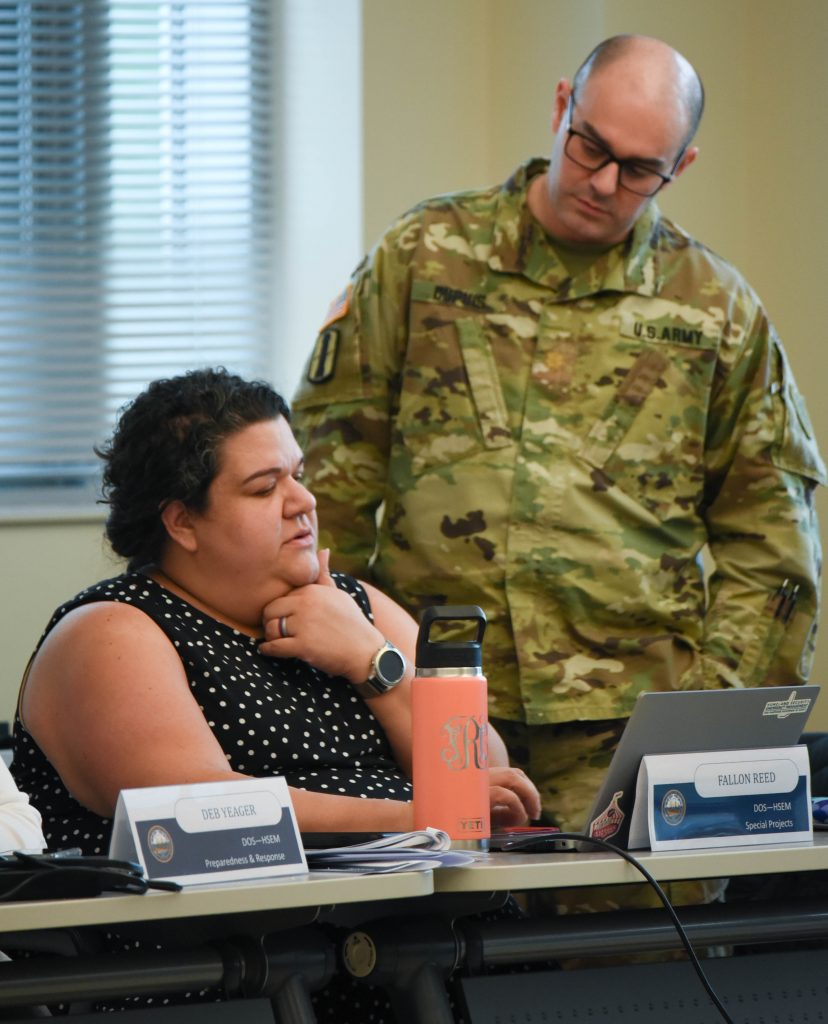
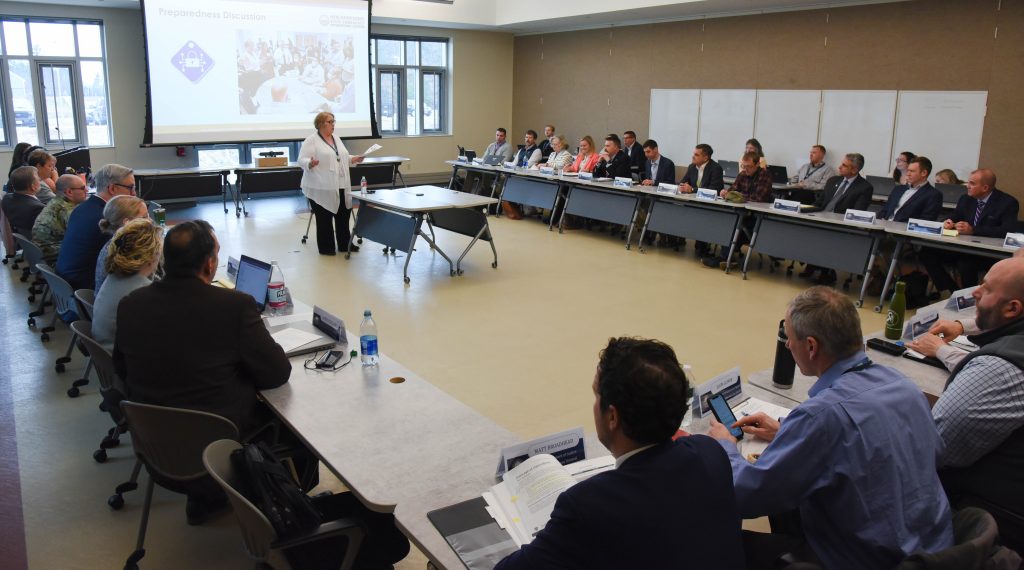
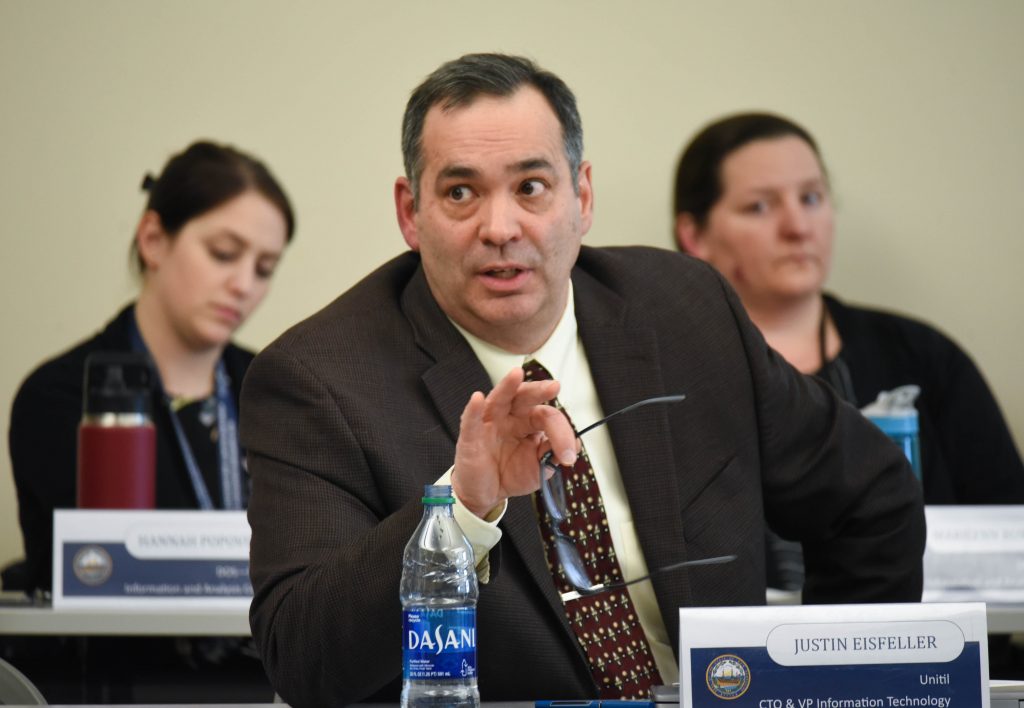
On April 7, New Hampshire emergency preparedness partners convened with representatives from New Hampshire’s energy providers to discuss contemporary challenges related to cybersecurity. The first half of the conference centered on situational awareness, trends in cyberwarfare and how the current situation in Ukraine has exacerbated our existing vulnerabilities. Later on, a series of discussions was facilitated centering on hypothetical cyber events and corresponding incident response plans of the utilities. Constructive conversations revealed mutual desires for the parties to collaborate further in the future in the form of information sharing and preparedness training. The workshop concluded with a shared accordance and a solid foundation set for future partnerships.
Preparedness Outreach

Sound the Alarm
On Saturday, May 7, nine members of the HSEM staff joined a cadre of Red Cross volunteers to bring the “Sound the Alarm” program to the Laconia area. Over the course of the day, 29 households received 80 smoke alarms. These households had 66 residents total with 12 veterans, 10 disabled individuals, 21 residents over the age of 65, and 10 children.
Every day seven people die from and another 36 people suffer injuries as a result of home fires, most often in homes without working smoke alarms. The “Sound the Alarm” program is a nationwide campaign that has installed more than 2.2 million free smoke alarms across the US.



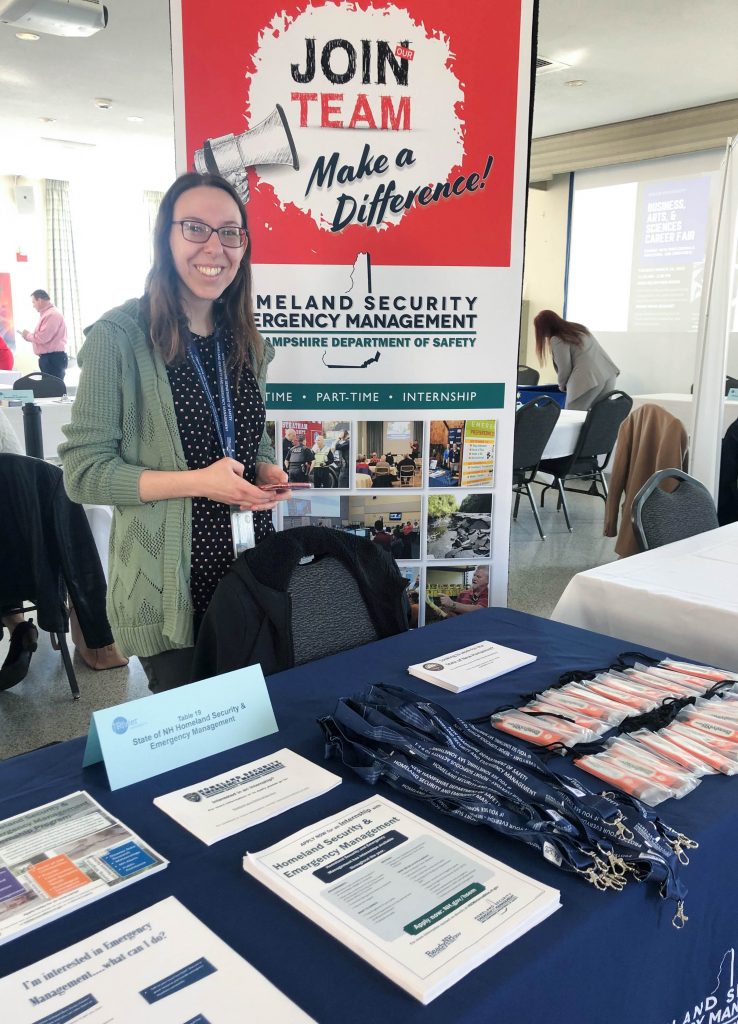

Training & Exercise Resources
L-0363: Multi-Hazard Emergency Planning for Higher Education – Rivier University, July 12-14, contact Robert Casey at rcasey@rivier.edu – To provide institutions of higher educations with knowledge and planning strategies to better protect lives, property, and operations more effectively and efficiently within the context of comprehensive emergency management.
AWR-313 Homemade Explosives: Awareness, Recognition, and Response (HME) – Concord, NH, August 1, https:prd.blogs.nh.gov/dos/hsem/?page_id=561&ee=1330 The HME course provides first responders with information on general explosive characteristics and hazards, homemade explosive precursor materials, homemade explosive manufacturing indicators, and Improvised Explosive Device (IED) components. Additionally, the course teaches first responders how to identify a homemade explosive laboratory and how to establish scene safety and security in such an incident. First responders are also presented information regarding community awareness and education programs related to homemade explosives. This information better prepares first responders to recognize hazards associated with homemade explosives during response operations.
MGT-324 Campus Emergencies Prevention, Response and Recovery – Rivier University, August 9-10 https://train.ncbrt.lsu.edu/Student/Register?ClassID=29345 Access Code NCBRT324 This course provides participants with an understanding of and ability to navigate through the difficult aspects of dealing with campus emergencies involving natural or human made events, including acts of violence. The course consists of small, problem-based, integrated group activities that require a coordinated, integrated approach to solve. Through tabletop scenarios, course participants will observe a developing incident and respond in a manner consistent with currently established campus and jurisdictional emergency operations procedures.
AWR-135 Essential of Community Cyber Security/MGT-384 Community Cyber Security Incidents – Concord, September 8-9 https://prd.blogs.nh.gov/dos/hsem/?page_id=561&ee=1331 These trainings are being combined into a comprehensive two day course The Essentials of Community Cybersecurity (ECCS) course provides individuals, community leaders, and first responders with information on how cyber-attacks can impact, prevent, and/or stop operations and emergency responses in a community. The course also provides a cursory introduction to cybersecurity vulnerabilities, risks, threats, and countermeasures. It explains vulnerabilities of computer systems and networks and how these vulnerabilities can affect communities, organizations, and daily workplace operations. The course introduces actions communities can take in establishing a cybersecurity program. Community Preparedness for Cyber Incidents, is designed to provide organizations and communities with strategies and processes to increase cyber resilience. During this course, participants will analyze cyber threats and initial and cascading impacts of cyber incidents, evaluate the process for developing a cyber-preparedness program, examine the importance and challenges of cyber related information sharing and discover low to no-cost resources to help build cyber resilience.
L-0105 Public Information Basics – Peterborough, October 4-6 https://prd.blogs.nh.gov/dos/hsem/?page_id=561&ee=1337 This three day class will equip the participants with the skills needed to be full or part-time PIOs, including oral and written communications; understanding and working with the media; and basic tools and techniques to perform effectively as a PIO, both in the proactive/ advocacy times and crisis/ emergency response. This is the replacement for the old G290 and G291. PREREQUISITES: IS-29 Public Information Officer Awareness.
Surface Transportation Emergency Preparedness and Security – Senior Officials – Nashua, October 13 https://sertc.configio.com/pd/939/2022-10-13-steps-sr-dhs-nashua-nh?diid=1751#Detail Participants shall hold elected or executive official level positions in public or private agencies or organizations that would have involvement in emergency preparedness. The STEPS-SR course offers an executive level introduction to the roles and responsibilities of preparedness, prevention, and response to emergencies involving surface transportation freight and passenger systems. This course will provide a clear overview of freight and passenger system threats facing jurisdictions/organizations of public and private officials and the organizational structure that must be implemented according to the NRF in an incident. There will be special emphasis on National Special Security Events (NSSE’s). Executives will learn to identify threats and vulnerabilities of freight (including flammable/combustible liquid transportation) and passenger system operations within their jurisdictions/organizations, learn to recognize and prioritize the importance of facility and conveyance hardening, receive familiarization with the NIMS/NRF to prioritize organizational immediate actions and response operations, and learn how to develop and apply management/planning tools for flammable/combustible liquids incidents and counter Improvised Explosive Devices (IED) operations and evacuations


